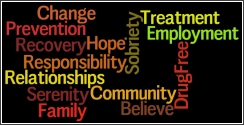 Within the last year, Methadone.US wrote about the resurgence of heroin addiction in corporate America and in particular areas of the Northeast United States. However, opioid addiction is not exclusive to the Northeast and is surfacing across the entire country. This emerging epidemic has gained the attention of numerous government personnel as well as local community leaders.
Within the last year, Methadone.US wrote about the resurgence of heroin addiction in corporate America and in particular areas of the Northeast United States. However, opioid addiction is not exclusive to the Northeast and is surfacing across the entire country. This emerging epidemic has gained the attention of numerous government personnel as well as local community leaders.
There are thousands of colleges and universities in America. While substance abuse on college campuses is nothing new, the growing heroin problem is. Alcohol, marijuana, and cocaine have been ever-present throughout colleges for decades, but opiates historically have been a second tier drug of abuse … until now.
A recent article on DrugFree.org has highlighted efforts being made at the University of Rochester and the University of Vermont to more actively screen for opioid abuse among the students enrolled there. It is anticipated that the number of college students using heroin will rise in correlation with the general heroin epidemic which has already infiltrated the state of Vermont and other parts of the country. Vermont’s Governor Peter Shumlin is on record as having recognized that the state is experiencing a genuine crisis with heroin addiction and associated overdose deaths.
According to the DrugFree article, Yale University officials have also reached out to students to share the school’s caution and concern that some students may not fully understand the danger and potency of the drugs being secretly distributed on college campuses. University representatives are trying their best to get ahead of the problem before things spiral out of control.
Heroin has become the new “cheaper” substitute for those who have developed a dependency on prescription opiates but who no longer have access to them. Unfortunately, it has become a practice among many colleges to keep drug problems out of the news for fear that it will tarnish the school’s reputation.
This tendency to keep things “quiet” often works against connecting addicted people with the professional help that they may need. Every college should be working hand-in-hand with local addiction treatment organizations and professional addiction counseling centers since most colleges and universities are not sufficiently staffed to deal directly and effectively with complex addiction treatment issues. Credit should be given to those schools that are being proactive in their desire to educate students before tragedy strikes.

 Follow
Follow

 Suboxone is medically approved to treat opioid addiction and withdrawal in the United States, and opioid replacement therapy is a documented, evidence-based best practice. That being said, the
Suboxone is medically approved to treat opioid addiction and withdrawal in the United States, and opioid replacement therapy is a documented, evidence-based best practice. That being said, the  Recovery is for everyone and anyone with a genuine desire for change. Treatment in a methadone program offers the potential for change, and a new path which can lead to a much improved life.
Recovery is for everyone and anyone with a genuine desire for change. Treatment in a methadone program offers the potential for change, and a new path which can lead to a much improved life. If you are currently a client in a methadone clinic, then you have most likely heard treatment staff emphasize the importance of safety with methadone and the necessity of carefully securing take home methadone doses. Methadone is a powerful medication that is tremendously helpful to recovering individuals. It is also potentially lethal in the wrong hands and consequently must be deliberately safeguarded.
If you are currently a client in a methadone clinic, then you have most likely heard treatment staff emphasize the importance of safety with methadone and the necessity of carefully securing take home methadone doses. Methadone is a powerful medication that is tremendously helpful to recovering individuals. It is also potentially lethal in the wrong hands and consequently must be deliberately safeguarded. There is growing interest from a number of entities in regard to America’s opioid addiction problem, methadone treatment, suboxone treatment, and the always important funding considerations that accompany these subjects.
There is growing interest from a number of entities in regard to America’s opioid addiction problem, methadone treatment, suboxone treatment, and the always important funding considerations that accompany these subjects.


